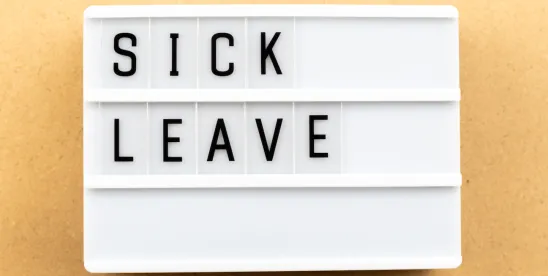In this episode of The Proskauer Brief, partner Harris Mufson and associate Phil Lebel discuss recent legal developments in California, specifically a new supplemental paid sick leave law and coronavirus (COVID-19) exposure notification requirements. Tune in as we discuss steps employers can take to ensure compliance with these new requirements.
Transcript (scroll down to listen):
Harris Mufson: Welcome to The Proskauer Brief: Hot Topics in Labor and Employment Law. I’m Harris Mufson and on today’s episode I’m joined by Phil Label and we are going to discuss recent legal developments in California, specifically with respect to supplemental paid sick leave and COVID exposure notification requirements. Phil, why don’t we start with the supplemental case paid sick leave that was recently enacted in California. Can you describe that new law for our listeners?
Phil Lebel: Sure, a couple of weeks ago Gavin Newsom signed a law that added a new section to the Labor Code Section 248.1, that established supplemental paid COVID-19 sick leave. Previously, several local jurisdictions in California including Los Angeles, San Francisco, and San Jose had enacted their own supplemental COVID-19 leave laws and this was designed to encompass the entire workforce in the state and address those employees who were not covered by the federal Families First Coronavirus response act. The new law provides leave for employees who are unable to work for one of the following three reasons. So one, the employee is subject to a federal, state, or local quarantine or isolation order related to COVID-19, the employee is advised by a healthcare provider or others treated to self-quarantine or self-isolate due to concerns related to COVID-19 or the employee prohibited working by the employer due to health concerns related to the potential transmission of COVID-19. Notably the law only provides leave for employees who are required to physically go into work to do their job and not people who only work at home or remotely during this period. That’s not necessarily the case with some of the local supplemental COVID-19 laws.
Harris Mufson: In terms of this leave coinciding with other paid leaves, like for example, leave under the Families First Coronavirus Response Act or other leaves under applicable state or local laws, can you describe how this leave fits into that group?
Phil Lebel: The supplemental COVID-19 leave law that’s provided in Labor Code Section 248.1 is designed to cover only those employees who are not covered by the federal Families First Coronavirus Response Act leave extension. It only covers employers that have 500 or more employees and who are therefore not covered by federal Law. That’s the same with all of the local ordinances that have established supplemental COVID-19 leave. So it’s really meant to work as a stop gap to provide leave where there was none before.
Harris Mufson: Got it. I believe it’s also a hosting requirement, can you speak a little more about that?
Phil Lebel: Correct, the labor commissioner created a poster that is supposed to be posted in places where employees congregate at work, in the event when employees are not congregating anywhere either because they are primarily working remotely or for whatever other reason the law provides that the poster can be distributed to employees electronically. The poster is available on the labor commissioner’s website and there are several translations that are available. In addition, there is language in Labor Code Section 248.1 that requires employers to provide leave balance information to employees who are eligible for this type of leave.
Harris Mufson: Let’s shift now to the other law that was recently passed in California that contains certain notification requirements for employees who test positive for the coronavirus. Phil, can you walk our listeners through that new legal requirement in California?
Phil Lebel: Governor Newsom recently signed AB 865 which, among other things, added section 6409.6 to the California Labor Code. That law requires that employers take a number of steps within one business day of notice of a potential exposure to COVID-19 in the workplace. So first, the employer has to provide written notice to all employees and employers of sub-contracted employees who were on the premises at the same worksite as the infected or potentially infected individual, that they may have been exposed to COVID-19. The law also requires that the employer provide the same written notice to a union, if any exists. The notice also has to provide all potentially exposed employees in any union with information regarding COVID-19 related benefits, as well as the anti‑retaliation and anti-discrimination protections under California Law, and notify all of those individuals of the employers disinfection and safety plan that the employer will implement in the wake of the potential exposure to COVID-19 in the workplace. Section 6409.6 also requires when an employer learns of a certain number of cases that meet the State Department of Public Health definition of a COVID-19 outbreak, that the employer, within 48 hours, notify the local public health agency of the names, number, occupations, and the worksites for employees that were infected or diagnosed with COVID‑19.
Harris Mufson: Phil, when does this new notification law take effect?
Phil Lebel: The law takes effect January 1, 2021. So employers have some time to get their safety plans together and they should follow local, state, and CDC guidelines regarding disinfection and safety plans.
Harris Mufson: Certainly interesting developments in California and thanks Phil for providing that to our listeners. And thank you for joining us on The Proskauer Brief today. Stay tuned for more insights on the latest hot topics in labor and employment law and be sure to follow us on Apple Podcasts, Spotify, and Google Play.




 />i
/>i

